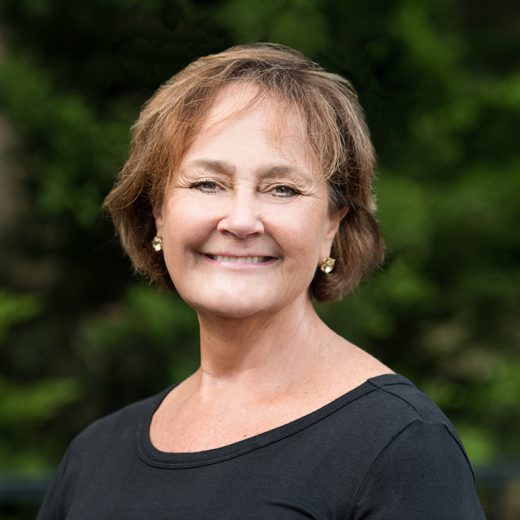2021 Triangle Market Overview and 2022 Forecast: HEALTHCARE
February 11th, 2022
Healthcare Trends and Outlook 
Each year, our industry experts evaluate and review the Raleigh, Durham, and greater Triangle commercial real estate market’s annual performance. We share activity and trends from the market data we analyzed and experienced in 2021 to activities we anticipate in 2022.
What are the key market drivers? How have the different real estate sectors performed?
In this segment, we interviewed Pam Michael, Executive Vice President to share her thoughts on healthcare trends.
To learn more about other property types click on office, land, flex, life science, investment sales, retail, and warehouse.
What was unique about 2021? And were there any milestones for this property type?
COVID, COVID, COVID. In 2021, healthcare facilities recovered from the worst public health crisis in more than a century.
Two important changes in healthcare lease activities were:
-Hospital systems were preoccupied with COVID and appeared to shift focus away from expansions.
-Non-affiliated practices sought short-term extensions of 12 to 24 months due to uncertainty in decreasing insurance reimbursements, increased compliance costs, shortage of personnel, and the uncertainty of the pandemic.
However, COVID proved the resilience of the medical industry and real estate market. Demand for acquisition by REITS and local and regional investors for medical properties continued throughout 2021.
Who were the big “winners” in this property type?
Sellers, landlords, local investors, and out-of-market investors were all winners in 2021. Why? Because there was and is very little product available for sale or lease. Buildings sold reached all-time high sales prices.
This is what was predicted. Due to the lack of product and the demand for this asset class, a majority of medical office building experts predicted higher sales prices.
Do you see any new emerging trends? Where do you see growth occurring?
Several medical office trends include:
• The need and demand for Virtual Health, aka Telemedicine, has continued to increase. The Centers for Medicare and Medicaid Services made telehealth eligible for reimbursement. Telehealth’s impact on real estate may include smaller physician offices with fewer exam rooms, however, most industry experts believe the expected impact on medical office space will be negligible.
• Spaces and pad sites within well-located retail centers help hospital systems’ branding efforts. Retail space offers hospital systems a competitive advantage with front facing signage, access, visibility, ample parking, and patient convenience.
• In 2021 we saw an increase of local, regional, and national behavioral health companies expanding into the Triangle region. The growth is a result of many factors including improved government reimbursements, rising mental health/substance abuse problems exacerbated during the pandemic, as well as awareness and growing social acceptance.
• COVID has also increased public demand for medical practices providing wellness services. The “new office” requirement may have a wellness component.
Healthcare facilities and physician offices follow population growth, seeking lower cost off campus facilities that are convenient and closer to patients. With the accelerated population growth, hospital systems and physician groups are competing at an increased level to gain market share.
What do you anticipate for 2022?
In our Raleigh Durham market, there are many factors that will help focus hospital systems and independent physician practices on future growth such as the backlog of demand created by COVID, postponed or canceled elective medical procedures, and unprecedented population growth coupled with increased residential spread into surrounding suburbs. New medical office developments will occur in 2022. Select proposed and planned projects will likely move forward.
Future medical office buildings will be positioned strategically following the residential spread throughout surrounding communities outside of the Raleigh and Durham epicenters, such as Clayton, Apex, Holly Springs, Wake Forest, Wendell, Fuquay-Varina, etc.
Remote work in the healthcare industry will mostly affect the administrative office. In some cases, administrative space within practice offices is being repurposed into additional treatment space providing immediate “expansion” within the existing space.
In addition, the alignment and/or acquisition of practices by local, regional, and national healthcare management organizations will continue to increase in an effort to hedge against continuing cost increases.
Where do you see opportunities in your property type for Raleigh, Durham, and the greater Triangle?
REITs will continue to pursue well-positioned medical office buildings. Due to the competition and rising costs, many medical real estate experts believe hospital systems may divest off campus real estate to fund continued growth.
In our market, what challenges are there in this property type?
Lack of available land, high cost of construction, and potential interest rate increases are challenges for the development of all property types in this area.
What factors are you seeing drive CRE decisions in this property type?
Population growth and the competition between hospital systems.
What do you love about working with this property type?
Most practitioners are very appreciative of a thoughtful in-depth approach to their real estate needs. I love an unsolvable puzzle: a need for real estate in a location with little or no apparent solution. Just because there is no apparent solution does not make the need go away.
As you look ahead, planning your CRE goals for 2022, let our real estate advisors help guide you with insider market knowledge and experience.
Contact info for all our professionals can be found at
https://www.triprop.com/about/team/
Access our full market reports here
https://www.triprop.com/category/market-reports/
